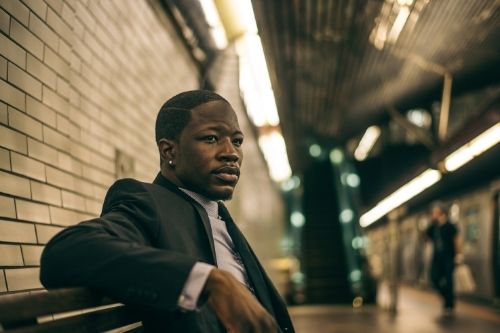Become an Observer of Your Thoughts
“Find ecstasy in life; the mere sense of living is joy enough.” ~ Emily Dickinson
How would you describe your relationship with your thoughts? Are you someone that over-analyses everything? Do you look for signs before you take action?
This is isn’t about ascribing blame but trying to understand our thoughts better. I used to over-analyse everything. In fact, one of the reasons I began meditating is that I couldn’t fall asleep at night because of the incessant mental chatter. I would analyse my entire day, which lead to worry, anxiety, and fear.
Can you relate to this? I’ve met many people over the years who experience difficulties with their thoughts. They believe their thoughts are fixed and cannot change it.
The good news is, we can change our thinking by noticing our thoughts, instead of getting caught up in the mind’s activity. We don’t need to over-analyse everything. The mind is not meant to process thousands of thoughts every day. Doing so can lead to anxiety, depression and other mental health problems.
It’s impossible to make sense of life through thought alone because as Albert Einstein once said: “We cannot solve our problems with the same thinking we used when we created them.” The mind that creates our problems is not the same mind that solves them. We must form a new consciousness, in which to resolve our problems.
Are you satisfied with this idea because I want you to understand that living from your thoughts is not conducive to your long-term happiness?
So, how do we solve our problems if we cannot do so without thinking?

I’m not saying we don’t engage in thinking to understand them. Rather, we allow thoughts to occur alongside other faculties, such as intuition. It is said, the heart is the seat of our soul and hence why we cannot count on thought to make sense of life. To better express this idea, when we over-analyse thoughts, who is aware of the thoughts? As you’re reading this article on the screen, you are aware of the voice in your head, aren’t you? But who is aware of the words? Is there someone else in your head? No, awareness is perceiving (witnessing) thoughts in your mind. It is when we drop into this awareness that thoughts come and go, but what remains is pure awareness.
Here’s how to test this idea. The next time you wake up in the middle of the night to go to the bathroom or grab a glass of water, try to be mindful of pure awareness after you wake. However, your mind will immediately generate a thought such as “I am thirsty,” which carries with it a string of successive thoughts. But if you can rest in awareness throughout the day, your thoughts will unhook themselves from the mind. I mentioned in a recent article titled How A Mental Diet Can Reorganise Your Thinking And Improve Your Life, how to disengage from negative inner-talk, via a four-step process. The premise behind this is becoming an observer of our thoughts, instead of engaging with them. Otherwise, we get stuck in an endless vortex of thoughts, without solving our problems.
Trust Life to Play its Role
“Kiss slowly, laugh insanely, live truly and forgive quickly.” ~ Paulo Coelho
Have you experienced this, where you get tired and over-stimulated trying to make sense of a difficult situation, without solving it? The key to overcoming life’s problems lies in witnessing our thoughts without becoming invested in what they have to say.
Thoughts are saboteurs and it is human nature that we think 60,000 to 70,000 thoughts a day, according to neuroscientists. So, why try to make sense of thoughts when they stream endlessly throughout the mind? We cannot stop the flow of thoughts, any more than stop breathing. What we can do is, observe our thoughts and distance ourselves from the mental chatter. The key is learning to trust the process of life because your problems and difficulties will resolve themselves in due course. People often ask me: “Tony, how can I trust life when a family member is dying of a life-threatening illness?” or “We don’t have enough money to pay the bills?”
We should try to solve these challenges by all accounts. What I’m advocating is that we stop over-analysing them day and night because a solution will rarely appear when we’re stressed.
I’m inviting you to engage your intuition and rest in awareness, to bring you the answers you need. Forcing something to happen rarely eventuates; life does not work that way. But if we nurture our mind with harmonious thoughts, and turn it over to the universe, the answers will arrive at the right time. Forcing things to happen is the job of the ego who believes it knows best, whereas the soul prefers to work in higher dimensions. This means engaging our inner guidance and trusting life to play its role.
Are you willing to change your relationship with life? Could you try living differently than before?

If we keep doing the same thing and expect different results, we hang our hat on worry and disappointment. When we change the way we think about life, as Albert Einstein alluded to, we create a shift and move toward our new life. We groove new neural patterns in our mind, which becomes our default way of thinking.
If you’ve ever scored a piece of wood with a saw, you will have noticed a permanent indentation in the material. No matter what happens to the wood, the scoring remains visible. This happens to our thoughts when we change our thinking; we form new neural patterns in the brain and create a better future. We literally upgrade the software in our mind.
With this understanding, I’d like you to consider a difficult situation you are dealing with. What are three to five ways you can overcome the problem? Once you’ve completed the exercise, put it aside for a while or better still, place it in a box and forget about it. I know it will be difficult, but see if you can trust the universe to bring you the answers in due course. After all, when we get out of our head and into our life, we will experience the destiny that was taking shape all the long.








